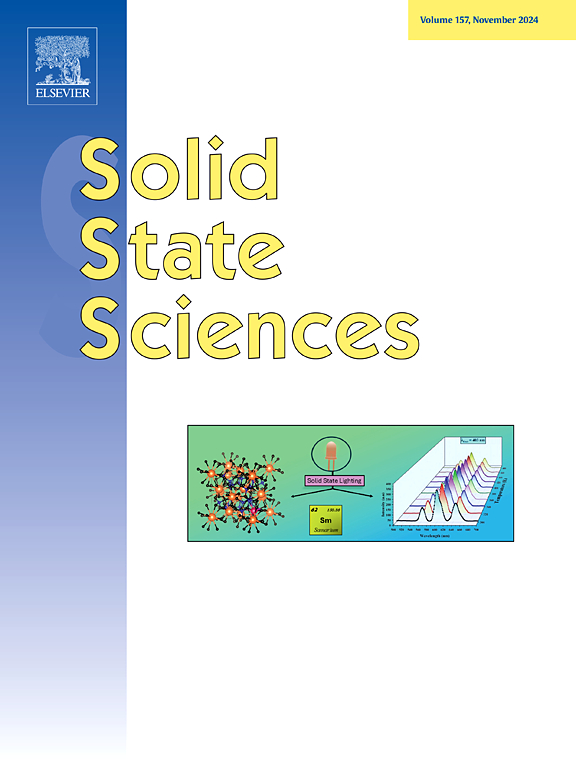Photothermal catalytic activation of peroxydisulfate with porphyrin-based metal-organic framework for removal of organic pollutants
IF 3.4
3区 化学
Q2 CHEMISTRY, INORGANIC & NUCLEAR
引用次数: 0
Abstract
Metal-organic frameworks (MOFs) have been proved to be one of the most promising photocatalysts for removing organic pollutants. However, the disadvantages, such as fast recombination of photogenerated carrier and low light utilization, significantly hinder the practical applications of MOFs. In this paper, porphyrin groups with wide light absorption range and high light-to-thermal conversion efficiency were introduced into MOFs to enhance their photocatalytic performance. These porphyrin-based MOFs can convert red and near-infrared light to heat to improve the utilization of solar energy. In particular, PCN-224-Co, which has a large specific surface area and high stability, was selected, as a proof-of-concept, to investigate the effect of photothermal effect in peroxydisulfate (PDS) activation. The results showed that PCN-224-Co could remove 92 % tetracycline hydrochloride (TC) in 15 min under photothermal condition, giving a high-rate constant of 0.11 min−1, which is much higher than that obtained without photothermal effect. PCN-224-Co/PDS system is capable of removing pollutants from different water bodies, indicating that the system has excellent prospects for practical application. In addition, the catalytic mechanism was also investigated by both experimental methods and theoretical simulations.

卟啉基金属-有机骨架光热催化过氧化二硫酸盐脱除有机污染物
金属-有机骨架(MOFs)已被证明是一种最有前途的去除有机污染物的光催化剂。然而,光生载流子复合速度快、光利用率低等缺点严重阻碍了mof的实际应用。本文将具有宽光吸收范围和高光热转换效率的卟啉基团引入到mof中,以提高其光催化性能。这些基于卟啉的mof可以将红光和近红外光转化为热能,从而提高太阳能的利用率。特别是,选择具有大比表面积和高稳定性的PCN-224-Co作为概念验证,研究光热效应对过硫酸氢盐(PDS)活化的影响。结果表明,PCN-224-Co在光热条件下可在15 min内脱除92%的盐酸四环素(TC),脱除速率常数为0.11 min−1,远高于无光热条件下的脱除速率。PCN-224-Co/PDS系统能够去除不同水体中的污染物,具有良好的实际应用前景。此外,还通过实验方法和理论模拟对催化机理进行了研究。
本文章由计算机程序翻译,如有差异,请以英文原文为准。
求助全文
约1分钟内获得全文
求助全文
来源期刊

Solid State Sciences
化学-无机化学与核化学
CiteScore
6.60
自引率
2.90%
发文量
214
审稿时长
27 days
期刊介绍:
Solid State Sciences is the journal for researchers from the broad solid state chemistry and physics community. It publishes key articles on all aspects of solid state synthesis, structure-property relationships, theory and functionalities, in relation with experiments.
Key topics for stand-alone papers and special issues:
-Novel ways of synthesis, inorganic functional materials, including porous and glassy materials, hybrid organic-inorganic compounds and nanomaterials
-Physical properties, emphasizing but not limited to the electrical, magnetical and optical features
-Materials related to information technology and energy and environmental sciences.
The journal publishes feature articles from experts in the field upon invitation.
Solid State Sciences - your gateway to energy-related materials.
 求助内容:
求助内容: 应助结果提醒方式:
应助结果提醒方式:


